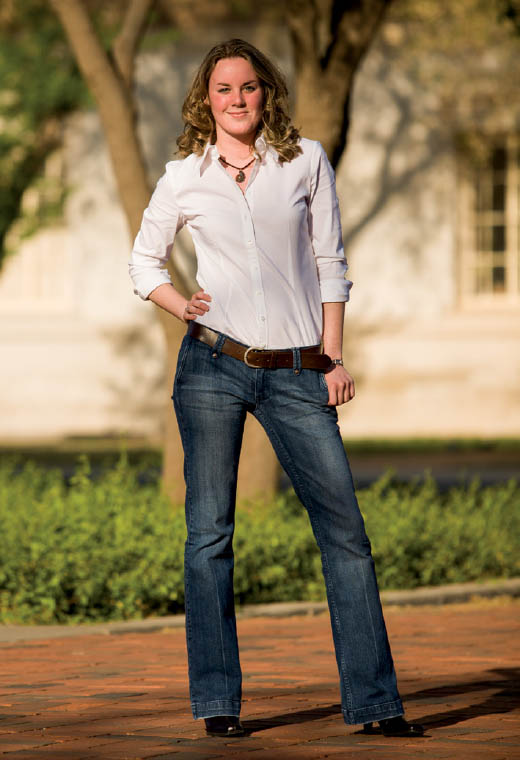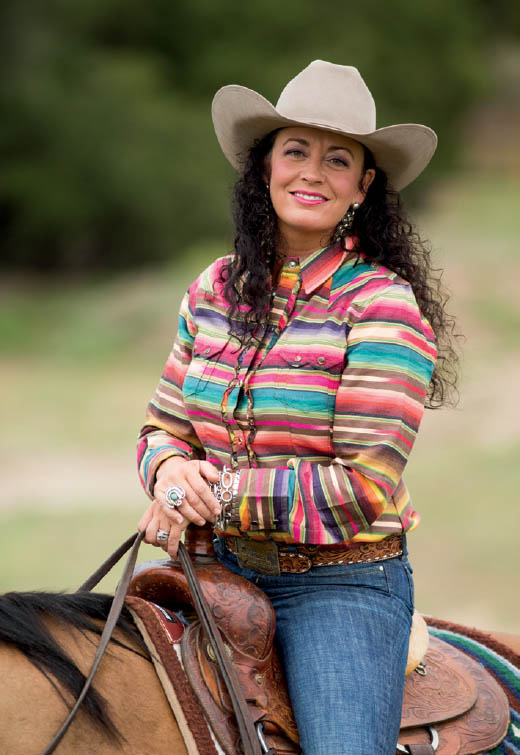17. THE THREE DEGREES OF DIFFUSION
![]()
LIGHT QUALITY DESCRIBES the hardness or softness of the light. Most practically, the quality of the light refers to how hard the transition from light to shadow is on your portrait subject. Like many things in photography, the quality of light exists on a ranging continuum from very hard, where the shadows are blocky and sharp, to so soft that the shadows do not appear at all. Luckily, we have three general terms that describe points of light quality. We refer to these as the three degrees of diffusion.
Direct light, the first degree of light quality, is unimpeded light from the sun. This type of light is usually very intense, and its shadows are very hard-edged. Essentially, you could take a marker and draw the line that separates the shadowed side of the subject from the lit side. This type of light is very natural, and can be used to convey rawness and attitude (Figure 17.1). It can, however, be somewhat unattractive for certain types of portraiture, such as headshots and beauty shots, since the shadows create structures on the subject’s face and form.
Diffused light, the second degree of diffusion, is the exact opposite of direct light. Shadows become increasingly non-existent the more diffused the light is. Diffused light bounces off of all surfaces from many angles, mitigating any strong directional characteristic of the light. Light essentially fills everything, so shadows are not apparent as a result. An overcast day, in which light from the sun travels through thick layers of moisture in the air, is a perfect scenario for using diffused light. This type of light is ideal for simple portraiture of just about anyone, and is especially great for children, females, and families (Figure 17.2). Since shadows are filled in by diffused light from every direction, this kind of light is great for blemished or heavily wrinkled faces. Although diffused light is the type of light that can be useful for just about any portraiture, it does lack a degree of dimension and emotional appeal for a great deal of editorial or story-driven portraiture.
The third degree of light quality, and the most often used, is directionally diffused light. Directionally diffused light sits between direct and diffused (hence the name). Directionally diffused light is the continuum on which the other two qualities of light anchor. Characteristically, directionally diffused light offers a lit side and a shadowed side to the portrait subject, but the transition from one to the other is soft and less delineated (Figure 17.3) than that of direct light. It offers the best of both worlds: dimension-creating light and shadow; and soft enough light to relieve those not-so-great attributes on face and form. We are most often exposed to portraits shot with directionally diffused light, from family-style portraits to editorial, on-location environmental portraits. Directionally diffused light comes in a variety of forms, and was used in many of the portraits you see in this book. It’s little wonder a great deal of research and development in the artificial, studio lighting industry is geared toward creating a range of light modifiers that help us replicate this type of light.
So, what is the real difference between these three degrees of diffusion? Directionally diffused light is found in all sorts of places naturally (as we’ll discuss in the next tip), but it’s created by increasing the size of the light source relative to your subject until the light is completely diffused. Simply put, the smaller a light source is relative to your subject, the harder the light, meaning the more defined the shadow becomes. As the light source increases in size, the softer the light, or shadows, become. For example, direct light is very hard and the source (in natural light portraiture) is often the sun. We all know the sun to be this large glob of fire some 93 million miles away; however, to the eye (and relative to your subject’s head), it is extremely small. The surface space of the sun is not large enough for light to have any wrap-around if, say, the sun was at a 70-degree angle to your subject. Although very powerful, the sun is a relatively small light source. Diffused light, created naturally by overcast conditions, is essentially free of shadows because the clouds act as one large light modifier, increasing the size of the light source to be as big as the sky!
Keep in mind that even though the three degrees of diffusion simply specify light quality, one is not better than the other. Light quality simply refers to a characteristic of the light. All qualities of light work well in some situation. Direct light may be great for creating a portrait in a desert to connote the starkness and heat of the environment, but it might not be great to showcase the innocence of a young child. To each their own, they say, when it comes to style and approach, but it helps to be aware of where and when to find great light.
I advise seeking out and using directionally diffused light when appropriate for two reasons. First, it’s simply a great type of light for just about anything, from fashion and family photography to editorial and corporate portraiture. It’s dimensional, emotional, and easy to visually consume. Second, directionally diffused light is all around us. Seeking it out and finding varying levels of it is great visual practice for a portrait photographer. Check out the next tip for more on finding and using this extraordinary type of portrait light!
17.1 Direct light is visually defined by dark, hard-edged shadows (e.g., the shadow on the subject’s nose). In natural light portraiture, these shadows are most often created by the sun.
ISO 100; 1/1250 sec.; f/4; 200mm
17.2 Cloud cover creates diffused light, and it naturally dissipates shadows. This type of light is especially useful for fashion, young children, and females.
ISO 400; 1/250 sec.; f/4; 300mm
17.3 Diffused light still has direction, but the transition between light and shadow on your subject is much softer than hard, direct light. You can see the gradual change of light intensity crossing the subject’s forehead, nose, and form.
ISO 100; 1/200 sec.; f/3.2; 70mm



